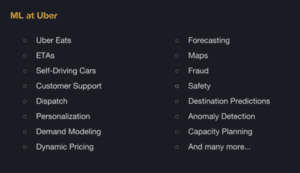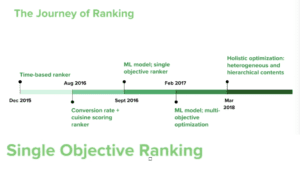Case Study: The Work of Parag Kumar Mital (My powerpoint slide is linked in this title)
Method:
Using the methods of:
- applied machine/deep learning
- Film
- Eye-tracking
- EEG
- fMRI
He creates complex trained works based on these datapoints. It is important to note here that Mital is really interested in utilizing this data specifically in the video realm. So he uses all of these datapoints to then train.
What is EEG?
- EEG → Electroencephalography
- records electrical activity of the brain
- Non-invasive, using electrodes on your scalp
- (If you take Neural Bases of Speech and Language at NYUSH… you can actually do this procedure on one of your fellow classmates)
What is fMRI?
- fMRI → Functional magnetic resonance imaging
- measures brain activity by detecting changes associated with blood flow
Mediums:
- augmented reality hallucinations
- film
So what is his piece?
The piece I looked at is called WDCH Dreams and it was commissioned by Refik Andaol Studio and LA Philharmonic.
But why? What is the SIGNIFICANCE of this art?
It uses 27 TB of the last 100 years of LA Philharmonic’s performance history. New methods of generating audio trained on LA Phil’s audio archive. Then the generated audio is used to “summarize”. Image content: “hallucinated people in black tie attire and orchestras” throughout the 100 year span.
Why is his work ESPECIALLY COOL?
You can literally take his class right now!
Sources
“16 Artists Using Machine Learning to Transform Digital Art.” Kadenze Blog, 16 Oct. 2016, https://blog.kadenze.com/arts-culture/16-artists-using-machine-learning/.
“Creative Applications of Deep Learning with TensorFlow.” Kadenze, Kadenze, Sept. 2019, https://www.kadenze.com/courses/creative-applications-of-deep-learning-with-tensorflow/info.
Mayo Clinic, Mayo Foundation for Medical Education and Research, 7 Dec. 2018, https://www.mayoclinic.org/tests-procedures/eeg/about/pac-20393875.
Mital, Parag. YouTube, YouTube, 1 July 2018, https://www.youtube.com/watch?v=ZXo5S6lVe7s.
“Parag K. Mital.” Pkmitalcom RSS, 2019, http://pkmital.com/home/.
Radiological Society of North America, et al. RadiologyInfo.org, https://www.radiologyinfo.org/en/info.cfm?pg=fmribrain.

